The word for the day is quatrefoil. It’s an architectural term that means “four leaves.” We can think of a quatrefoil as a four-leaf clover set in stone or wood or brick. Here are five quatrefoils (that’s twenty leaves, if you’re counting) seen around town:
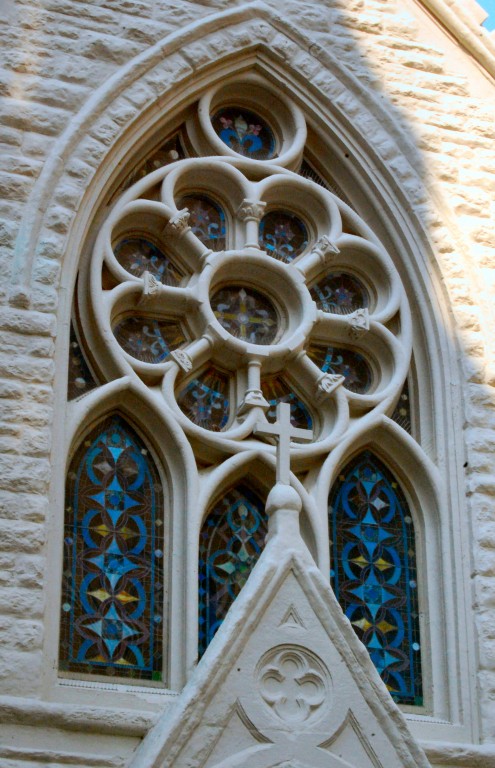 Below the rose window and the cross, a quatrefoil on the gabled entrance of St. Patrick Cathedral (1892).
Below the rose window and the cross, a quatrefoil on the gabled entrance of St. Patrick Cathedral (1892).
 A split quatrefoil on the gable brace of the carpenter gothic house (late 1800s) on Grant Avenue off Samuels Avenue. (Update: Four days after this post was published, the carpenter gothic house was demolished by developers.)
A split quatrefoil on the gable brace of the carpenter gothic house (late 1800s) on Grant Avenue off Samuels Avenue. (Update: Four days after this post was published, the carpenter gothic house was demolished by developers.)
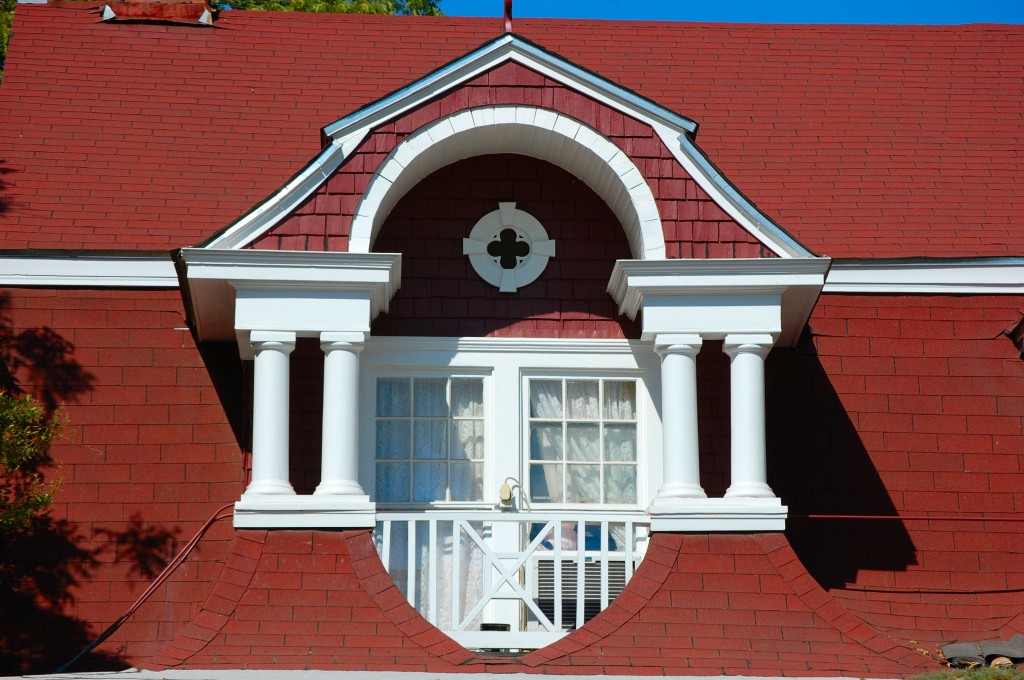 Talbott-Wall house (1903) on Samuels Avenue.
Talbott-Wall house (1903) on Samuels Avenue.
The next three quatrefoils are “barbed”: They have points between the leaves, similar to a quatrefoil that dates to 1260 on the Cathedral of Notre Dame in Paris.
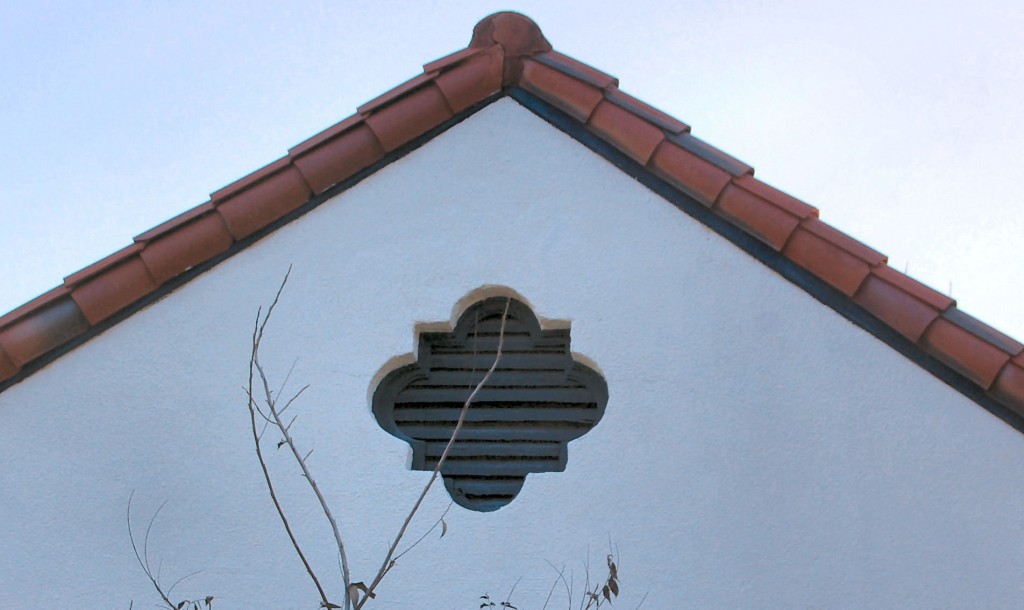 A gable vent on a house on 5th Avenue.
A gable vent on a house on 5th Avenue.
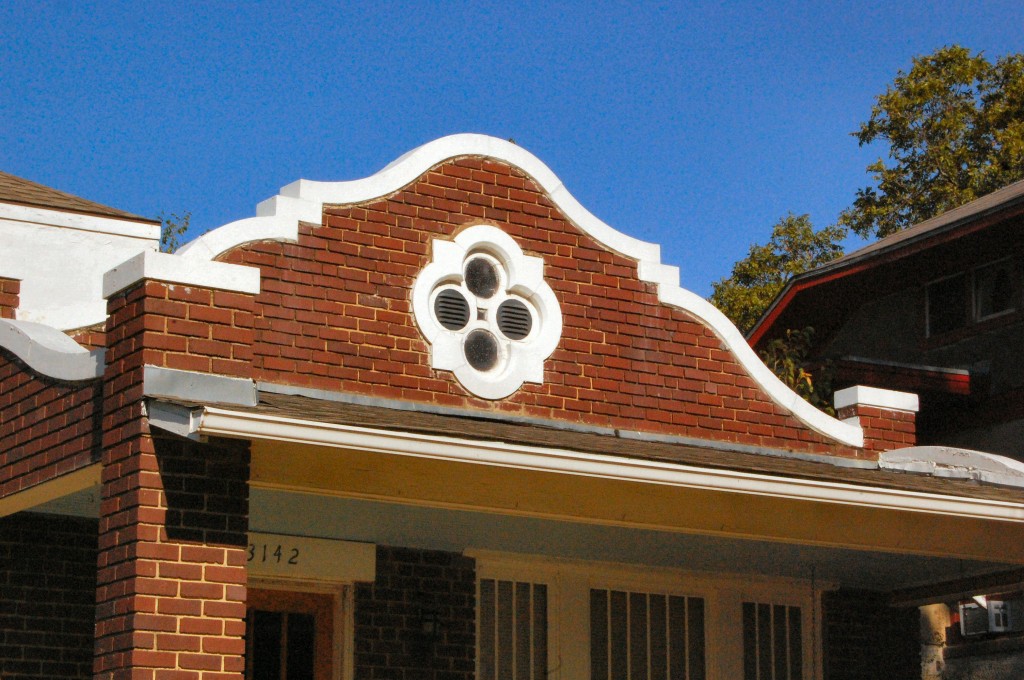 On the parapet of the Davis house (1914) on College Avenue.
On the parapet of the Davis house (1914) on College Avenue.
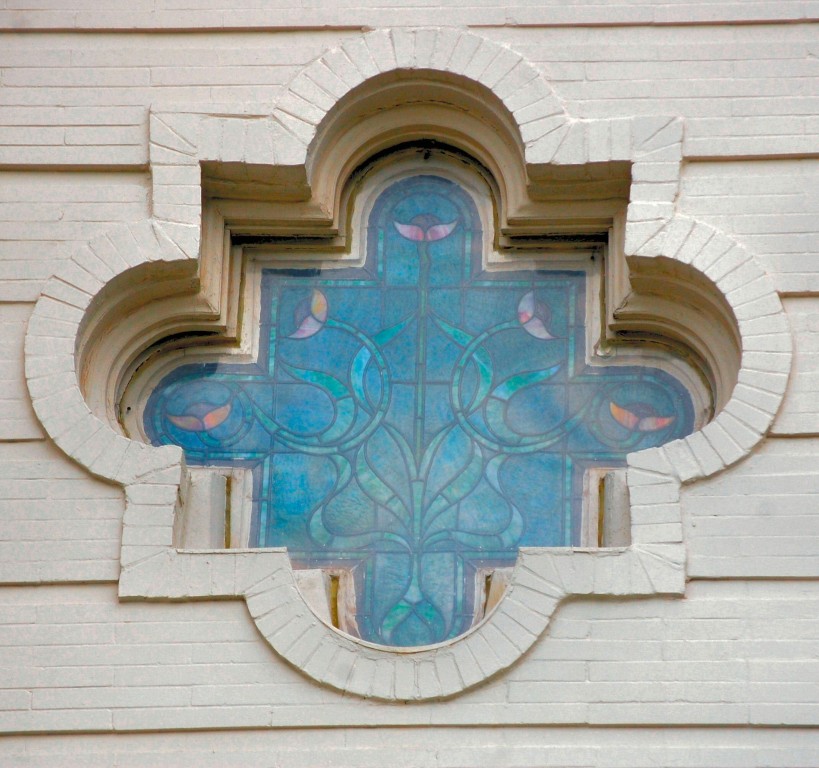 On the Moore house (1906) on Pennsylvania Avenue, a Quality Hill survivor.
On the Moore house (1906) on Pennsylvania Avenue, a Quality Hill survivor.
That’s enough good luck for one day. In Part 2 we look at a building that is a veritable clover patch.





